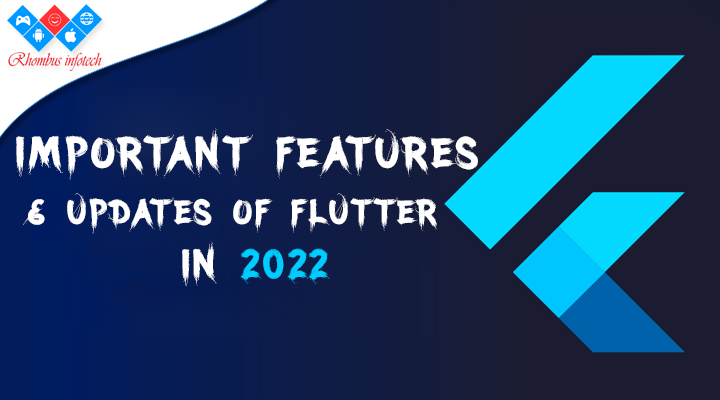In this blog, we will discuss about top new & exciting features & updates of flutter that every mobile app developer should know.
Four years back, Google team had launched Flutter 1.0 to help mobile app developers with all new enhanced experience of developing new apps. In version 2.0 of Flutter, Google added features such as Native Platform views, Sound null safety by default, web support along with a desktop preview. In the later versions of 2.0, such as 2.5, Google added Material You, the next generation of Material design. And now, we have arrived at Flutter 3.0, which provides even better and more powerful development tools, for creating a delightful user experience.
Top Features of Flutter 3.0
Firebase Support
Firebase is a Backend-As-A-Service for Flutter developers, providing them with hosted backend services such as Cloud storage, real-time database, crash reporting, and more. With Flutter 3.0, the Firebase’s core integration with the platform becomes more robust and more powerful. Google has now moved the source code and documentation into the core part of the Firebase offering, which is the main Firebase repository and site, thereby providing Flutter developers with a powerful backend service for creating better and more feature-rich mobile apps. Google is also developing a suite of Flutter plugins that will make it easier to use Firebase. Firebase Crashlytics is another new update, wherein developers can checkout errors and crash in real-time.
Dart 2.17
Dart SDK within Flutter gets a new update with Flutter 3.0. The new Dart language: 2.17 will be now accessible to all Flutter developers (and also to those who don’t use Flutter!). Dart 2.17 has several new features such as using enums and override as default functions, deploying and testing custom-written classes, using API sample code, and more.
Foldable phone support
Flutter 3.0 will now support programming for foldable devices and phones, and this has been made possible after a collaboration with Microsoft. Developers on Flutter can now use MediaQuery class and assign rules for DisplayFeatures, detailing the information about device elements such as hinges, folds, cutouts, and more.
iOS variable refresh rate support
For iOS-based mobile apps, there is some exciting news coming in from Flutter 3.0 updates. From now on, developers will get support for variable refresh rates on iOS devices, especially those having a ProMotion display, and iPhone 13 pro and iPad Pro devices. With this update, iOS mobile apps built on Flutter will support 120 Hz refresh rates on these devices, which was limited to 60Hz earlier.
Web app lifecycle
Flutter 3.0 now has a new feature called Webapp Lifecycle: This new Lifecycle API for web applications will provide developers with more flexibility and control over the bootstrap process of the Flutter app, when hosted via an HTML page. Besides, Lighthouse can now analyze the app’s performance in real-time and provide valuable inputs as needed.
Image decoding
This is an important update for the Flutter web version. With the Flutter 3.0 version, the Flutter Web interface will be automatically able to perceive and deploy imagecoder API, right through the browser. By leveraging the browser’s built-in image codecs, Flutter web will be able to decode images asynchronously, which will result in upto 2X improvement in loading images.
MacOS & Linux support
With Flutter 3.0, developers can now create apps for macOS and Linux operating systems as well. When Flutter was initially launched, it supports Android and iOS platforms, which gradually expanded to Windows, Web, and embedded devices. With MacOS and Linux support, the spectrum and reach of Flutter have now further expanded.

